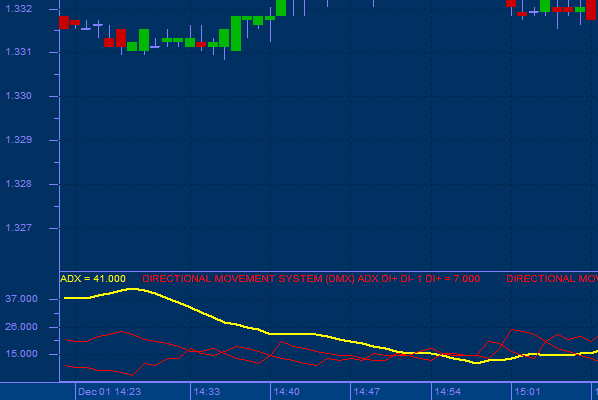
The Directional Movement System helps determine if an instrument is trending. It was developed by Welles Wilder. The system involves 5 indicators which are the Directional Movement Index (DX), the plus Directional Indicator (+DI), the minus Directional Indicator (-DI), the average Directional Movement (ADX) and the Directional movement rating (ADXR).
Wilder has taken the concept of direction down to the individual period level. For intra-day analysis, he compared current period with the previous period. If the trading range for current period extended primarily above previous period then directional movement was considered to be up. If it extended primarily below previous period’s range then directional movement was considered to be down. There are also rules for handling inside, outside and limit periods. He summarized this by stating that the directional movement is the largest part of current period’s range that lies outside previous period’s range.
Usage:
The key feature of the Directional Movement System is that it first identifies whether the market is trending before providing signals for trading the trend. It measures the ability of bulls and bears to move price outside the previous period’s trading range
+DI measure positive, or upside, movement and the second line, -DI measures downward, or negative, movement. Wilder suggests buying when the +DI rises above the -DI and selling when the +DI falls below the -DI. The basic Directional Movement Trading system involves plotting the 14period +DI and the 14 period -DI on top of each other. When the +DI rises above the -DI, it is a bullish signal. A bearish signal occurs when the +DI falls below the -DI.

